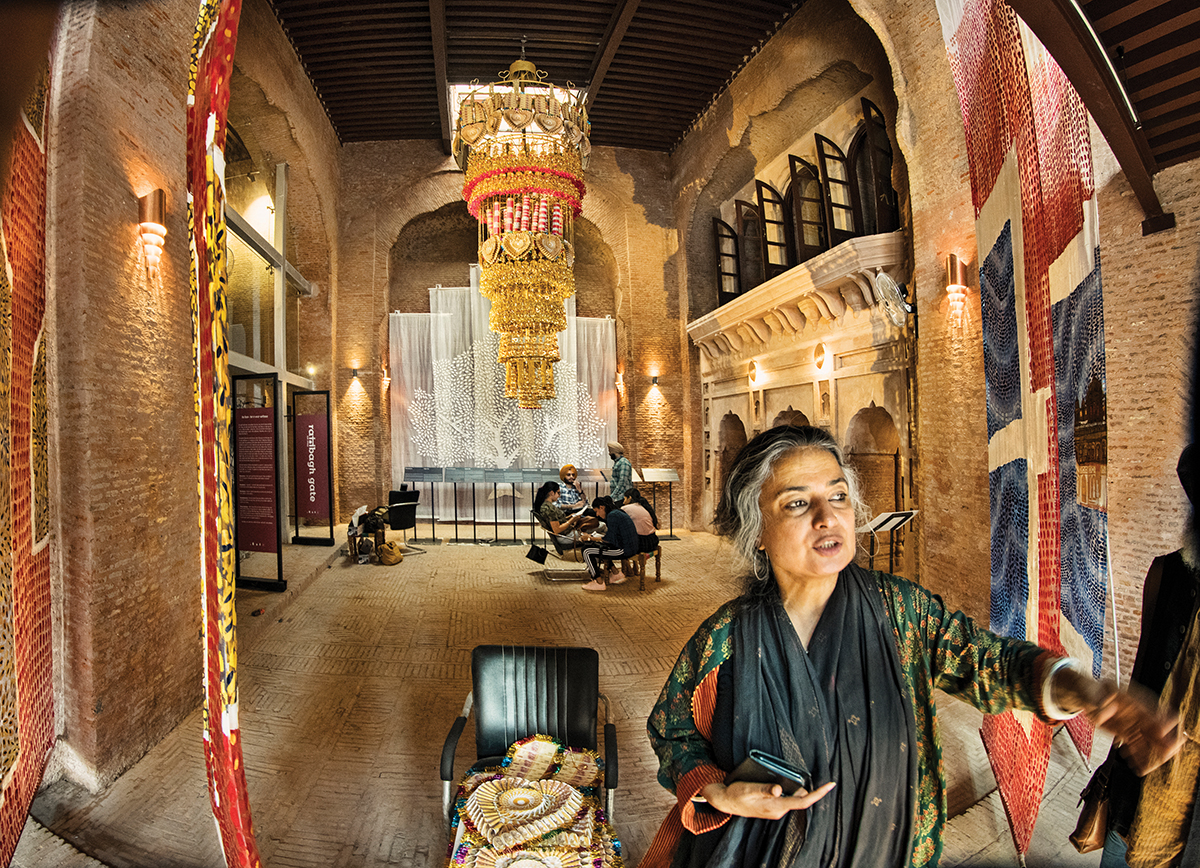In Conversation with Nripal Adhikary
September 26, 2017
Nripal Adhikary
Architect, designer and painter Nripal Adhikary truly believes in small is beautiful. He is the founder of ABARI, which he set up in 2006 with the aim of doing socially and environmentally committed research, design and construction. He seeks to examine, encourage and celebrate vernacular architectural traditions by starting a conversation around adapting traditional materials into the modern context, which was absent from the architectural narrative of Nepal. After the catastrophic earthquake that wrecked Nepal in 2015, Adhikary feels that though it is a mammoth task of rebuilding the country, there is a huge opportunity to change the course of development towards a more sustainable model, which is the only way to go. He spoke to Bhawna Jaimini about the challenges of reconstruction after a disaster, sustainability and his experiments with bamboo.
BJ: The 2015 earthquake was extremely catastrophic for Nepal, killing more than 10,000 people and destroying an estimated 600,000 homes. How is ABARI, your firm, involved in the reconstruction process right now?
NA: The earthquake was extremely traumatic for the people of Nepal, and since the reconstruction process hasn’t fully started yet, the memories of the earthquake are as fresh as they were two years ago. We have been working a lot on the reconstruction of schools and public spaces, which are important to restore normalcy in people’s daily lives. There is a lot of focus on building houses for people, which I feel is important, but for us, we have been focusing on working to improve and reconstruct external infrastructure with bamboo and earth-based construction techniques. We started with developing prototypes, setting up supply chains for these materials and techniques, and setting up implementation mechanisms. Currently, many of the buildings are in the implementation stage.
BJ: What is the overall status of the reconstruction work in Nepal?
NA: The situation on the ground is still pretty grim even after two years. The government took very long to put the reconstruction policy into place and now that it is finally out, it is so stringent that it is almost impossible to rebuilt as per the policy in the given budget. Each family is being given a grant of NPR 3 lakh (US$3,000) for the reconstruction of a house, which is very little money if compared to the way the policy has laid out rules for building, completely eliminating the use of any earth-based materials or bamboo but allowing only steel and cement. The government needs to understand that no material in itself is safe or unsafe. Many houses built in RCC (reinforced cement concrete) collapsed during the earthquake while many buildings made with earth-based techniques survived.
BJ: Are you working towards pushing for a policy change?
NA: Right now, we do not have the bandwidth or experience to engage at the policy level. But I am hopeful for a shift in the thinking where we can achieve the mammoth task of rebuilding our country in a more sustainable manner.
BJ: How can we deal with the issue of getting skilled labour and artisans who can work with materials other than concrete and brick? Because there is not much work available for artisans and labour who used to work with other materials; they are soon turning to concrete and brick or leaving construction work altogether.
NA: That is an important point. Skilled labour is very hard to get and the process of training labour is cumbersome, time consuming and expensive. Since we often work in difficult terrain with access to very little resources, both in terms of what is available on-site and what can be transported to site, training labour is not an option. What we do is ‘de-skilling’ the process of construction where we work around with the bare minimum of skills that can be put to use in constructing a building without compromising safety or aesthetics.
For example, it would take a very skilled artisan to produce complex wood joinery but nuts and bolts are fairly easier to work with. So we make a design that can be assembled with nuts and bolts joinery and still looks beautiful and serves its function.We are constantly working with ‘de-skilling’ the construction process of our buildings because that way, our work can be replicated on a much wider scal
To read the complete article, get your hardcopy at our online shop/newsstands/major bookstores; subscribe to FuturArc or download the FuturArc App to read the issues!
Previously Published In Conversation
Contact us at https://www.futurarc.com/contact-us for older interviews.



